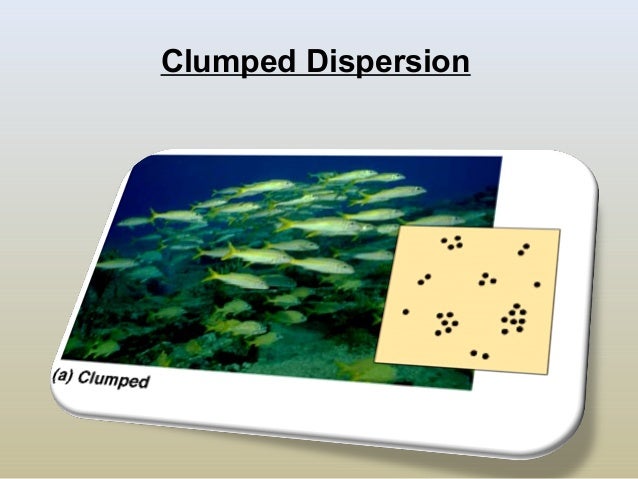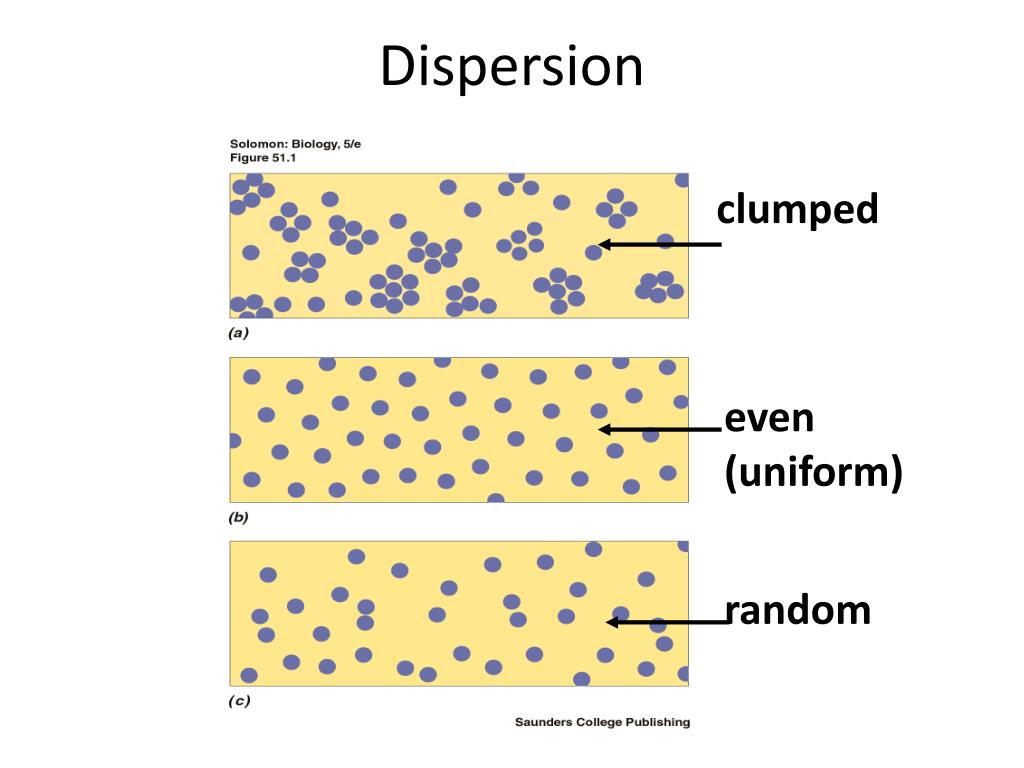

It may also be triggered by interpersonal social experiences. Different distributions reflect important aspects of the biology. Clumped dispersion is often attributable to uneven environmental distribution of nutrients or other resources. The two species were symmetrical on both substrata, indicating that there is no tendency for members of one species to be more isolated than members of the other species.Possible explanations of the differences in spatial pattern shown by the three species are discussed, and experimentally testable hypotheses are proposed to clarify the importance of physical and biological factors in the spatial patterns of distribution of the three species. These are known as random, clumped, and uniform distribution patterns, respectively (Figure 2). Clumped Clusters of differentiation A pattern of distribution in a population in which individuals have a much higher probability of being found in some areas than in others in other words, individuals are aggregated rather than dispersed. Nerita and Bembicium were significantly segregated on both substrata, indicating that the microhabitat requirements of the two species are different. No useful tests for segregation and symmetry between Cellana and the other two species could be made because of the difference in dispersion of this species. There was no correlation between index of dispersion and density, or time of year, in any species. Cellana tramoserica, however, was dispersed at random on Peyssonelia, and regularly dispersed on bare rock. Most of the threatened species occurred in the park had clumped. In clumped dispersion patterns, individuals are grouped in patches, a result of unequal distribution of resources. Nerita atramentosa and Bembicium nanum showed significant aggregated (clumped) dispersion in both substrata. occurred in the sub montane and montane zones of the Mount Gede-Pangrango National Park. There are three different forms, Uniform, Random and Clumped. The frequencies of nearest neighbours of each species to each animal in the sampled area were analysed to determine the degree of spatial segregation and symmetry in the three species. What you are referring to are dispersion patterns. Distances to the nearest members of each species from random points were analysed to determine spatial patterns of dispersion.

The three explanations for clumped dispersion.The patterns of dispersion of Nerita atramentosa, Bembicium nanum and Cellana tramoserica within two major substrata, the encrusting alga Peyssonelia gunniana and bare rock were analysed from quadrat samples taken at low tide, over 1 year.

Additionally, offspring can be very similar to their parents in non-moving species, such as plants, and display clumped dispersion patterns. When a habitat is patchy such as grasslands, the clumped dispersion of animals is seen. When resources are found in great proportions in an area, one can observe clumped dispersion. Clumped dispersion is characterized by the irregular distribution of resources and nutrients. It may also be triggered by interpersonal social experiences. Clumped dispersion is the most popular form which is observed in a population of species. A clumped distribution with this mean would have lots of zeros and more quadrats with high numbers of animals (that is there would be few quadrats with 4s and.



 0 kommentar(er)
0 kommentar(er)
